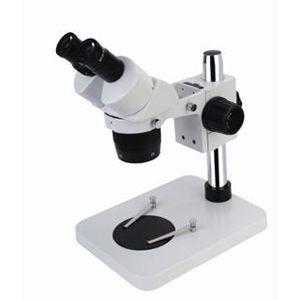Stereo microscopes give users three-dimensional views that make it easier to examine the depth and structure of a specimen. Compound microscopes, on the other hand, create two-dimensional images of the objects under study. The specimen and the objective lens are separated noticeably by the considerable working distance of stereo microscopes. They are therefore perfect for analyzing huge specimens or those that are challenging to prepare for compound microscope viewing. The use of a stereo microscope has several benefits, such as:
l Three-dimensional imaging: By using a stereo microscope, viewers can view objects in three dimensions, which helps them comprehend the depth and structure of the material. Compound microscopes, on the other hand, create two-dimensional images of the objects under study.
l Long working distance: When using a stereo microscope, the specimen and the objective lens are separated by a significant amount because of their longer working distance. They are therefore perfect for analyzing huge specimens or those that are challenging to prepare for compound microscope viewing.
l Ease of use: Operating a stereo microscope is not that hard. Simply place the specimen on the stage and use the coarse and fine focus knobs to concentrate the picture to operate a stereo microscope. Following that, you can modify the eyepieces to fit your eyes and provide the appropriate magnification.
l Versatility: Stereo microscopes are useful in many disciplines, including biology, geology, electronics, and materials science. They are employed in a range of educational contexts as well.
A stereo microscope is your best option if you require a lengthy working distance or the ability to observe specimens in three dimensions. You can make better use of a stereo microscope if you are aware of its advantages. The extended working distance, for instance, can be utilized to examine huge or challenging-to-prepare specimens for compound microscope viewing.



